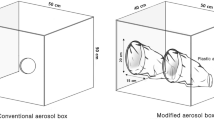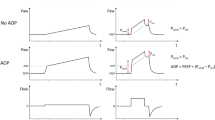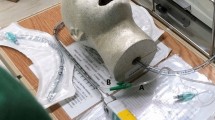Abstract
Endotracheal intubation has broad application prospects in the biomedical field. At present, visual intubation tools are mainly used to judge the catheter position. However, when patients suffer from pains in the neck, throat, and trachea and other diseases or other conditions, if the exposure of the glottic area is not ideal, there are difficult airways. For difficult airways, this visual intubation tool has great limitations. Studying the new guidance method of endotracheal intubation and providing a reference or solution for difficult airway intubation is a crucial problem in the biomedical clinical field. In this paper, an endotracheal intubation method is proposed based on end-tidal carbon dioxide (ETCO2) perception. The simulation model verifies the feasibility of this method for endotracheal intubation guidance. Then, four micro-cavity tubes are used as a gas collection tube, and a set of endotracheal tube guidance systems based on ETCO2 perception is designed and developed to collect and process the CO2 concentration information in the pharyngeal cavity. The experimental results show that this guidance system can be used for intubation guidance in the simulated pharyngeal cavity without vision.
摘要
气管插管在生物医学领域有着广阔的应用前景。目前主要采用目视插管工具判断导管位置。但是, 当患者患有颈、喉、气管疼痛等疾病或其他病症时, 如果声门区暴露不理想, 就会出现气道 困难。对于困难的气道, 这种目视插管工具有很大的局限性。研究新的气管插管引导方法, 为困难气道插管提供参考或解决方案, 是生物医学临床领域的关键问题。本文提出了一种基于呼气末二氧 化碳(ETCO2)感知的气管插管方法。仿真模型验证了该方法用于气管插管引导的可行性。然后, 采用4根微腔管作为气体收集管, 设计开发了一套基于ETCO2感知的气管内导管引导系统, 对咽腔 内CO2浓度信息进行采集和处理。实验结果表明, 该导引系统可用于模拟无视觉咽腔插管导引。
Similar content being viewed by others
References
HUANG S Q. Correlation analysis of visual laryngoscope for endotracheal intubation in patients with difficult airway [J]. Chinese Journal of Urban and Rural Enterprise Hygiene, 2021, 36(9): 197–198 (in Chinese).
PEDERSEN T H, UELTSCHI F, HORNSHAW T, et al. Optimisation of airway management strategies: A prospective before-and-after study on events related to airway management [J]. British Journal of Anaesthesia, 2021, 127(5): 798–806.
TOLA D H, ROJO A, MORGAN B. Basic airway management for the professional nurse [J]. The Nursing Clinics of North America, 2021, 56(3): 379–388.
HU B, TIAN T, XUE F S. Tracheal intubation with video laryngoscopy in out-of-hospital sitting [J]. Scandinavian Journal of Trauma, Resuscitation and Emergency Medicine, 2021, 29(1): 146–146.
WANG Q. Comparison of orotracheal intubation with the video-laryngoscope and the traditional direct laryngoscope [J]. China Medical Device Information, 2021, 27(4): 139–140 (in Chinese).
CAI S N, ZHANG X J, JIA Y F, et al. Comparison of video laryngoscope and direct laryngoscope in endotracheal intubation in patients undergoing non difficult airway surgery [J]. Shandong Medical Journal, 2020, 60(35): 78–80 (in Chinese).
WOODALL N M, COOK T M. National census of airway management techniques used for anaesthesia in the UK: First phase of the Fourth National Audit Project at the Royal College of Anaesthetists [J]. British Journal of Anaesthesia, 2011, 106(2): 266–271.
TODD D W. A comparison of endotracheal intubation and use of the laryngeal mask airway for ambulatory oral surgery patients [J]. Journal of Oral and Maxillofacial Surgery, 2002, 60(1): 2–4.
LIU B Y, YAN J, JIANG H. Application of end tidal carbon dioxide monitoring in difficult tracheal intubation during oral and maxillofacial surgery [J]. Chinese Journal of Oral and Maxillofacial Surgery, 2019, 17(5): 448–452 (in Chinese).
TRUCHOT J, GAYET A R, PHILIPPON A L, et al. End tidal carbon dioxide monitoring in acute asthma: A prospective pilot study in emergency department patients [J]. European Journal of Emergency Medicine: Official Journal of the European Society for Emergency Medicine, 2019, 26(6): 412–416.
DING L H. Clinical application and significance of end expiratory carbon dioxide partial pressure monitoring in clinical anesthesia [J]. Chinese Journal of Modern Drug Application, 2018, 12(16): 69–70 (in Chinese).
WANG W J, WU J M, DAI R F, et al. Analysis on the clinical application value of filling three-dimensional finite element model in the upper airway in the patients with difficult air-way [J]. China Modern Doctor, 2020, 58(8): 98–101 (in Chinese).
SUN D, LI F S, ZHAO X G, et al. Vortex evolution induced by jets in realistic human mouth-throat model [J]. Journal of Medical Biomechanics, 2013, 28(5): 509–514 (in Chinese).
YU C, LIU Y X, SUN X Z, et al. Acoustic rhinometry and acoustic pharyngometry in the modeling of human upper respiratory tract [J]. Journal of Biomedical Engineering, 2009, 26(6): 1255–1259 (in Chinese).
Author information
Authors and Affiliations
Corresponding author
Ethics declarations
Conflict of Interest The authors declare that they have no potential conflict of interest.
Additional information
Foundation item: the Science and Technology Commission of Shanghai Municipality (No. 18441904600), and the Cross Research Fund for Translational Medicine of Shanghai Jiao Tong University (No. ZH2018ZDA14)
Rights and permissions
About this article
Cite this article
Sun, Y., Tao, T., Zhao, H. et al. Endotracheal Intubation Method Based on End-Tidal Carbon Dioxide Perception. J. Shanghai Jiaotong Univ. (Sci.) (2024). https://doi.org/10.1007/s12204-024-2707-2
Received:
Accepted:
Published:
DOI: https://doi.org/10.1007/s12204-024-2707-2




